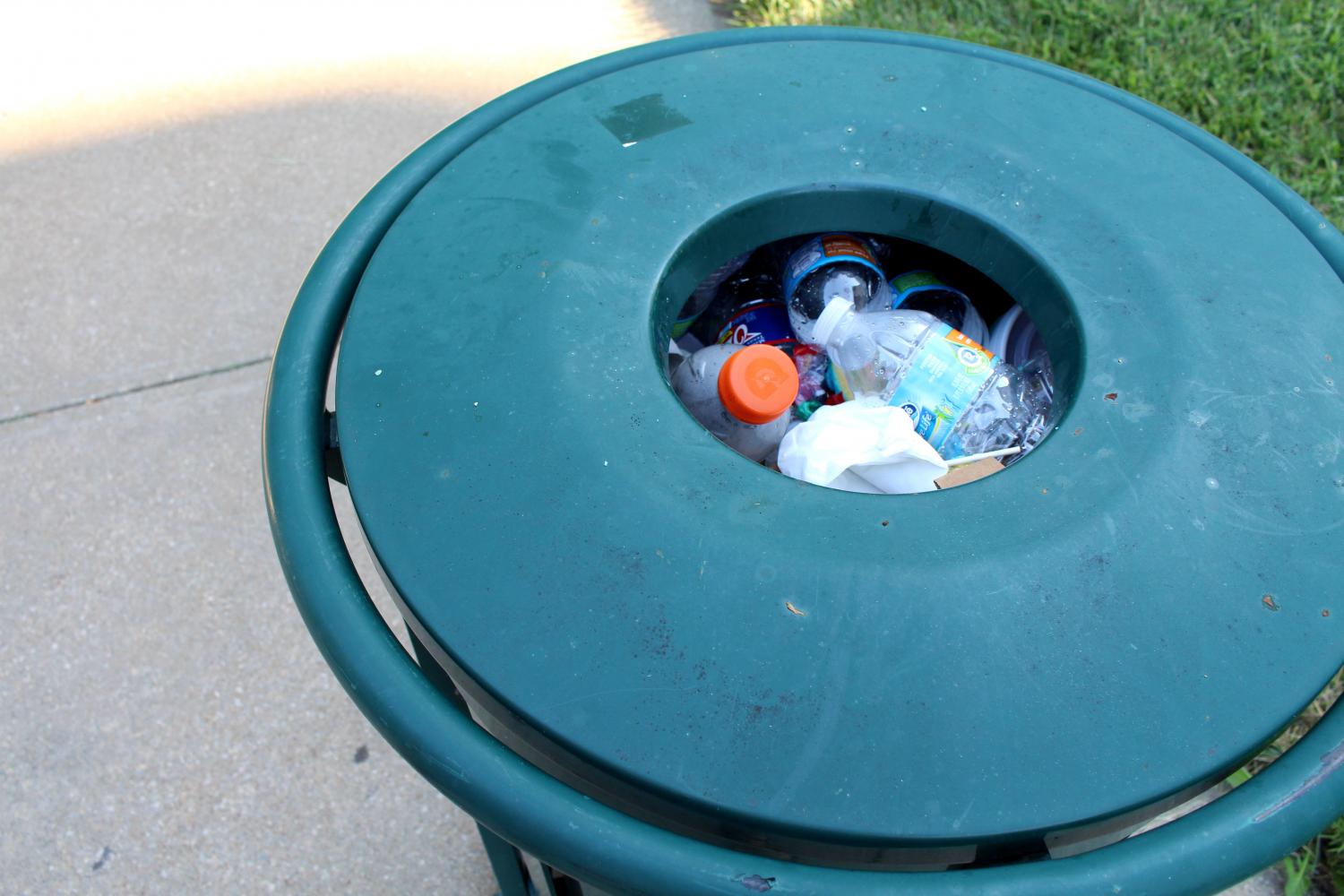Food waste impacts the world
Millions of American’s waste food every year. This trash can full of plastic bottles is one example of how people waste food and drink.
Food.
It’s integral to survival, and Americans love to eat it. However, there is another side to the story we often neglect about the food we don’t eat. This is a dangerous trend that wastes food, resources and money.
In 2012, the Natural Resources Defense Council (NRDC) released a report regarding Americans’ food waste. The study revealed that 40 percent of all food grown in the United States ends up in a landfill rather than on the table.
Since the 1970’s, Americans have doubled the amount of food thrown away and show no signs of slowing down.
The report by the NRDC concluded that 165 billion dollars worth of food is thrown away every year. That equates to 20 pounds of food per person every month that is wasted.
The most obvious downside to food waste is people who live in food-insecure households, meaning they don’t know when and where their next meal is coming from. According to the Department of Agriculture, 41.2 million people lived in those conditions.
There is enough food out there to feed the hungry, but most of it is being thrown away due to consumers’ stigmas about expiration dates and that failure to incentivize small businesses to donate their food.
Currently, there is no federal law that requires manufacturers of food products to label their products with an expiration date. The only exception is baby formula. Therefore, when grocery stores fail to sell products by the dates labeled on the package, rather than donating it, they throw it away because they, like many Americans, believe it has gone bad.
The other issue lies within the tax code.
Unlike with bigger corporations, smaller businesses do not have a permanent tax break for donating food. With storing, packaging and shipping, food donations cost a lot. If a smaller business is not properly being incentivized, then they are not going to donate. For them, the simpler and cheaper option is throwing it all away.
The hungry people are not the only negative effect of food waste. It takes money and resources to cultivate the food we eat, and if America is throwing away 40 percent of the food grown, then all those resources are being wasted.
The NRDC did a follow-up study in 2017 and found some startling information.
According to the study, 19 percent of cropland used to grow food is being wasted because all the food grown there is thrown away. With increased urbanization, the development of crop land is shrinking, and farmers cannot afford to waste any fields to which they have access.
In addition, the study also found that 21 percent of all water being used for agricultural purposes is being used on food that will be thrown away. When states like California are experiencing droughts, is it not responsible or economically viable to waste water on something that will end up in a landfill.
However, businesses and farmers are not the only ones being affected. There are financial repercussions for the average consumer as well.
The 2012 NRDC study also detailed that the average American wastes a quarter of the food they purchase. One out of four grocery bags bought will end up in the garbage. Americans are notorious for buying more food than needed, which only increases the amount of food wasted.
In conclusion, food waste not only wastes food, but also the resources and money needed to grow that food. The hungry have no food to eat, and the average American is wasting money on something that will be thrown away. To fix this problem, Americans must break the stigmas surrounding food waste and practice more economical ways of shopping.
Most of all, Americans need to think before they throw food away.

Jamie Pellikaan is a senior majoring in History and Religious Studies with minors in Mass Media, Primary Texts and Creative Writing. She is the current...







